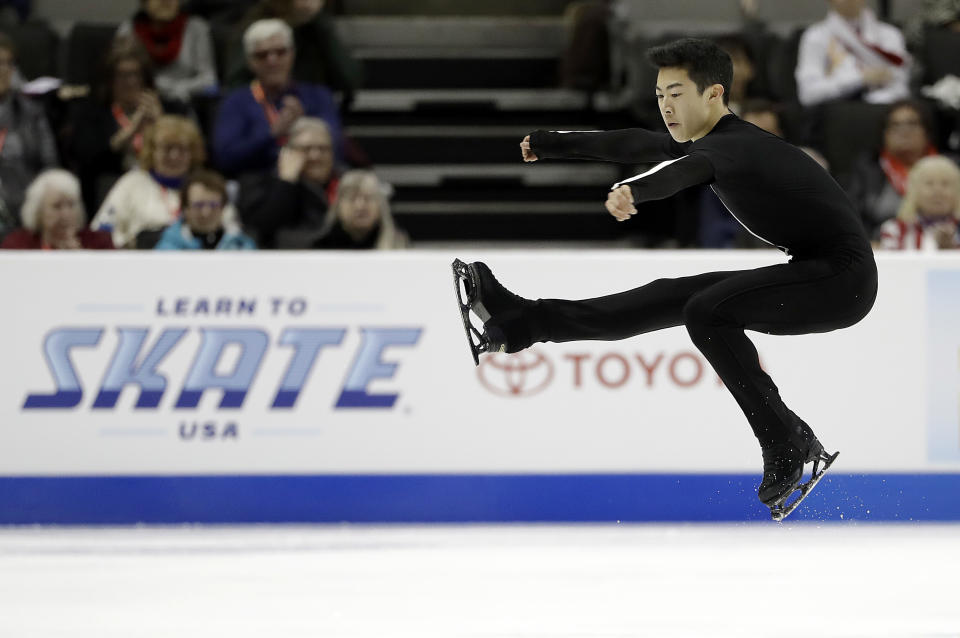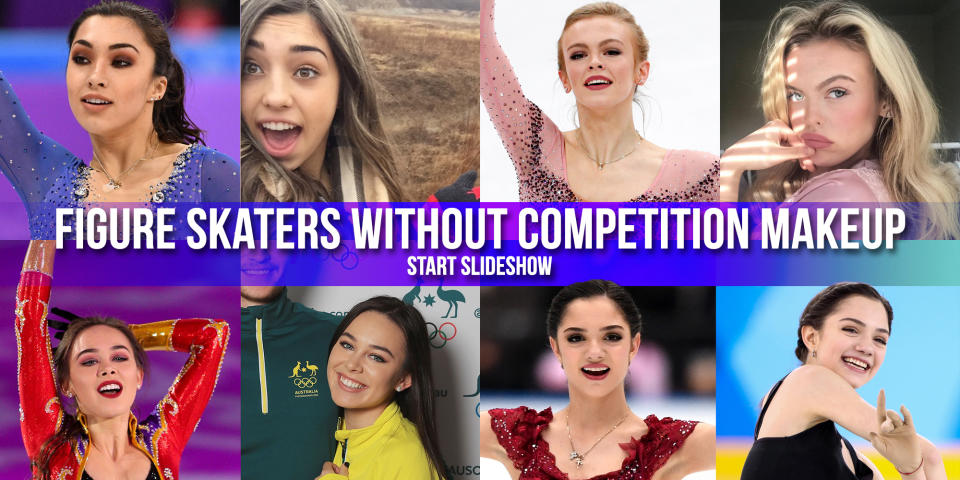An inside look at some of figure skating's obscure rules
When you’re one of 153 figure skaters vying for an Olympic gold medal, every tenth of a point counts.
Anything less than perfection could mean a deduction – and it’s not just a fall that could be the difference between first and second place.
Take a look at some of figure skating’s lesser known rules.
Falling to Pieces
There’s a reason most skating costumes don’t feature flowy feathers or loose objects. If anything falls on the ice during a performance – something from their costume, a piece of jewelry, or something in their hair – it’s an automatic deduction from the judges.
Skaters opt for tight, spandex-like material with crystals glued on for their performance outfits because it’s sturdier and there’s less of a chance of something falling off.

Don’t Bring Sexy Back
And don’t think that’s the only costume-related deduction there is. Up until 2003, female competitors had to wear “a skirt covering hips and posterior” if they wanted to avoid losing points for being too sexy.
No skirts are required now, but if the referee and judging panel agree, they can still deduct points for costumes they believe are a hazard or that are too revealing for competition.
Lyrics in songs
Ashley Wagner’s post competition reaction captured headlines after the U.S. Championships, but before the 2014-15 season, her free skate program would’ve been the talk of the skating world for another reason.
Wagner skated a La La land inspired program complete with songs – and lyrics – from the movie.
Before the 14-15 season, having song lyrics would’ve meant a deduction, but with a change in the rules, PyeongChang will be the first Winter Olympics where fans have lyrics to sing along to.

Music
The lyric rule may have changed, but there’s other confusing rules still in place, especially for skaters in the Ice Dancing competition.
According to the ISU Regulation manual, the short dance music may be vocal, but “only dance music with an audible rhythmic beat” while the free dance on the other hand “must have an audible rhythmic beat and melody, or audible rhythmic beat alone, but not melody alone.”
Breaking either rule is two-point deduction.
And don’t forget the tempo change. Music during the free dance “must have at least one (obvious) change of tempo/rhythm and expression,” or it’s another two points the judges take off.
Time Violations
Time is money or – for the Olympians at least – points. Taking the starting position even one second late is a one point deduction.
Surprisingly, there’s a grace period for ending the program, but ending more than five seconds too soon or too late means another point gone.
Extra Jumps, Extra Deductions

More is less especially when it comes to jumps in a figure skating program. You won’t see a program where the skaters are jumping non-stop across the ice.
The ISU limits the number of jumping passes for competitors in a free skate to seven for women and eight for men in an attempt to get diverse programs.
Skaters get a point boost if a skate is done later in a program, but if they try to sneak in an extra jump for a higher score, they won’t receive receive any points for that jump.
But they will get a deduction for it.
More Olympic coverage from Yahoo Sports:
• Olympic snowboarder breaks neck after scary fall (video)
• Skating coach warned after attempting to fix Sochi race
• Chen’s top five NBA all-time All-Stars list is total nonsense
• Busbee: Video gamers may be getting Olympic medals soon
• Wetzel: We’ve already seen enough, bring the NHL back to Olympic hockey

